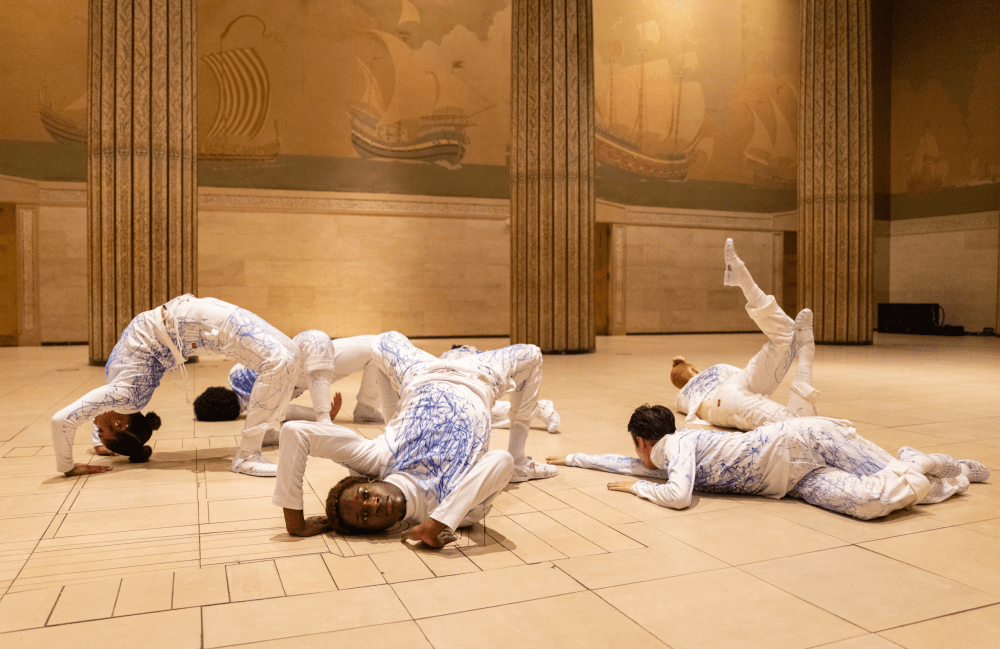

In his precarious yet exuberant sculptural environments, the Paris-based artist, filmmaker, and poet Julien Creuzet often delves into centuries-long histories of trade and displacement. His multimedia installations skillfully combine the debris of domestic and industrial life (plastic containers, electric cables, cellphones) with that of the natural world (soil, seashell, wood sticks) — and often, these sculptural ecosystems invoke his childhood home of Martinique, the French Caribbean island at the crossroads of African, European, and Native American civilizations.
Algorithm ocean true blood moves focuses on the muscle memory of movements and gestures that have been passed down through generations of the African diaspora across time and geographies, now reconnected through social media. Over several years, the artist has been constituting a personal archive of moves, gestures, and styles from the Internet, revealing unexpected similarities between steps and physicalities, such as Sudanese clerics moving in squatting positions during a ceremony and American teenagers “duck walking” in the aisles of a supermarket.
This new performance was conceived in collaboration with Brazilian choreographer Ana Pi. It features dancers from the Alvin Ailey School and is performed to the vibrations of Shatta, a new genre of electronic Caribbean dancehall music from Martinique. Algorithm ocean true blood moves translates these movements into a performance that bridges geographical and temporal separations.
Algorithm ocean true blood moves takes place at the Léman Ballroom on Broad Street in Lower Manhattan, historically the site of the original seventeenth-century Dutch settlement. Inaugurated in 1928 as a bank but shut down a year later by the stock market crash, the building encapsulates the hazards of American history. Wrapping around the perimeter of the performance area is a 225-foot-long mural which depicts generations of sailing vessels, including ancient Mediterranean galleys, Spanish and Portuguese Renaissance caravels, and twentieth-century ocean liners.
Curated by Charles Aubin